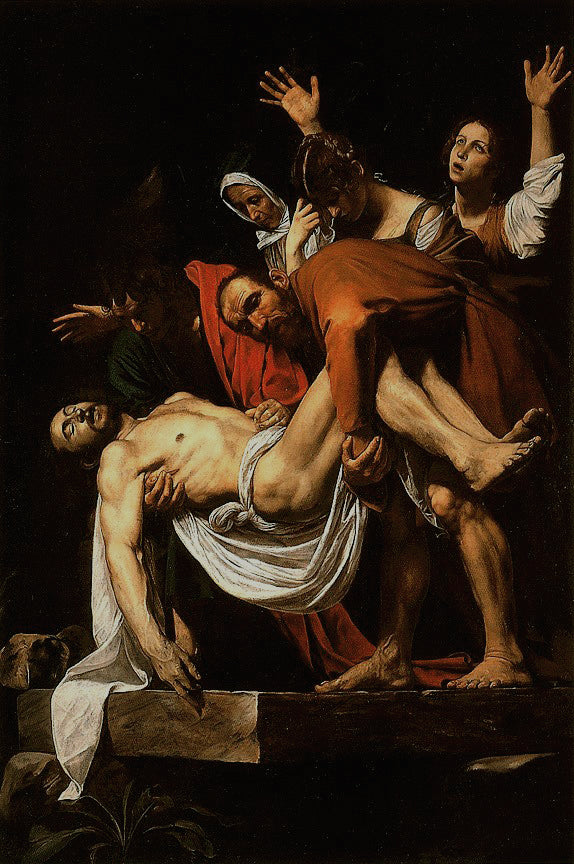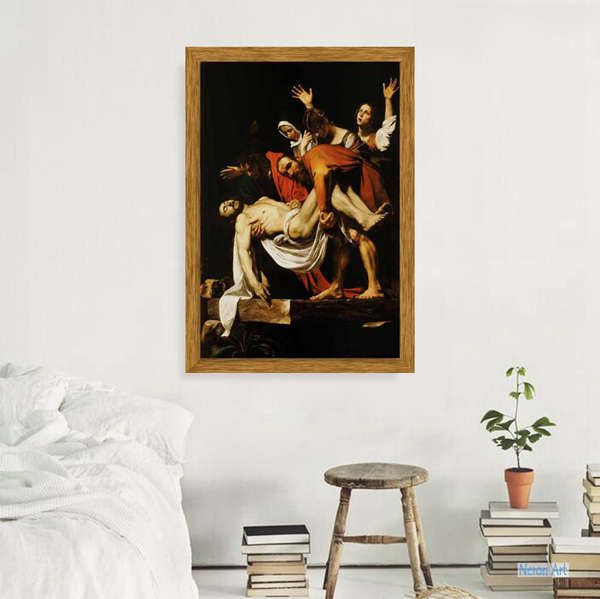Description
Caravaggio ranks alongside the best artists of all time due to his ultra-naturalistic approach to baroque art, which includes realistic images of Christ, the Virgin Mary, saints and prophets, which marked a fundamental change with respect to the most idealistic Mannerist painting and hizo mucho para contrarrestar el arte del Alto Renacimiento reenvasado de Annibale Carracci and his followers.
Caravaggio's new naturalism was precisely what the Council of Trent wanted in the 1550s when it demanded a new form of Catholic art from the Counter-Reformation that the common people could understand and in which to inspire. Pero a muchos conservadores del Vaticano les pareció demasiado crudo, ya veces demasiado irrespetuoso, installarse en una iglesia. Without immutarse, Caravaggio continued to paint dramatic scenes with real persons "con verrugas y todo". He demonstrated a complete mastery of light and darkness, using the chiaroscuro technique to add volume to his figures and tenebrismo to inject real drama into his images. Más tarde, este estilo de 'Caravagismosería copiado por algunos de los grandes maestros antiguos, como Rubens (1577-1640), Rembrandt (1606-69) y Vermeer (1632-1675). Despite his well-earned notoriety as a "genius of evil", Caravaggio was without a doubt the greatest of all the Italian baroque artists of the beginning of the XVII century.
El Entierro de Cristo - the most monumental and admired retablo of Caravaggio - was painted for the chapel of the Pietà in the Chiesa Nuova, the church of Santa Maria in Vallicella, Rome, which was built for the congregation of priests, founded in 1561 by San Felipe Neri. The artist received the original commission from Alessandro Vittrice in 1601, shortly after completing The Conversion of San Pablo Camino a Damasco (1601) and The Crucifixion of San Pedro (1601) for the Cerasi Chapel in the Church of Santa Maria del Popolo. Lo completó dos años después. The original now forms part of the collection of the Vatican Museums, while a copy is stored in the Chapel of the Pietà. La pintura was universally admired by contemporary art critics like Giulio Mancini (1559-1630), Giovanni Baglione (1566-1643) and Gian Pietro Bellori (1613-96), author of the famous Lives of artists (Vite de'Pittori, Escultores y Arquitectos Modernos, 1672).
The painting consists of a very compact figurative group that consists of six people, including the dead Christ. The superior half of the body of Christ (the one of a muscular worker) is supported by Juan the evangelist (with the red mantle) (or possibly José de Arimathea), his right hand touches the wound of the white weapon of Christ; la mitad inferior la lleva sostenida San Nicodemo, quien tradicionalmente quitó los clavos de los pies de Cristo en la cruz. Nicodemus is the dominant character in the image and his body is his compositional and spiritual anchor. Históricamente, un hombre rico, aquí se lo representa como un trabajador, cuya forma de trolle deliberadamente desinada sugeste un servicio devoto a su difunto Señor.
Behind the two men, the three women are grouped in the form of a fan. They include (from left to right): the partially obscured Virgin Mary, represented here as an old nun, who extends her arms horizontally in an image of blessing and acceptance of what has happened; en el centro, con el rostro sombreado, María Magdalena, la seguidora de Jesús, que se seca las lagrimas con un blanco pañuelo; a la derecha está la lorona María de Cleofás, hermana de la Virgen María, que levanta los brazos al cielo. Recuerda mucho a su previous María en Conversión de la Magdalena (1598, Instituto de Arte de Detroit), que se basó en la modelo de 22 años Fillide Melandroni.



